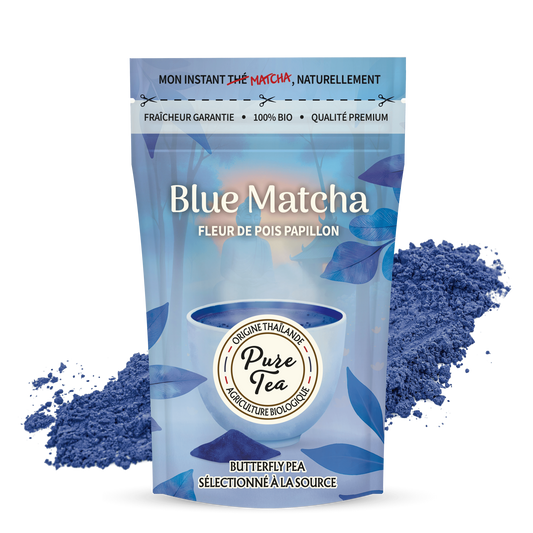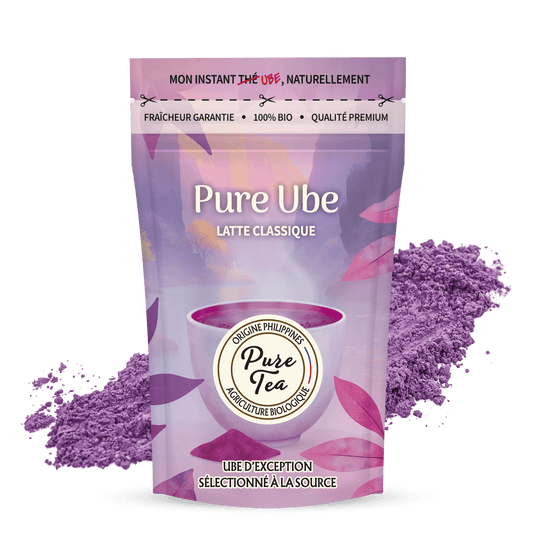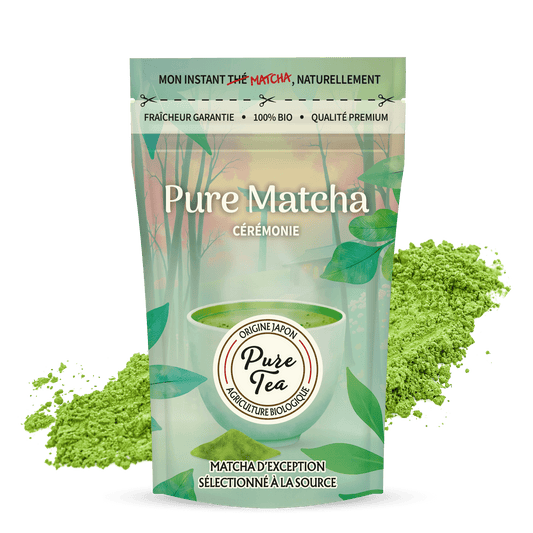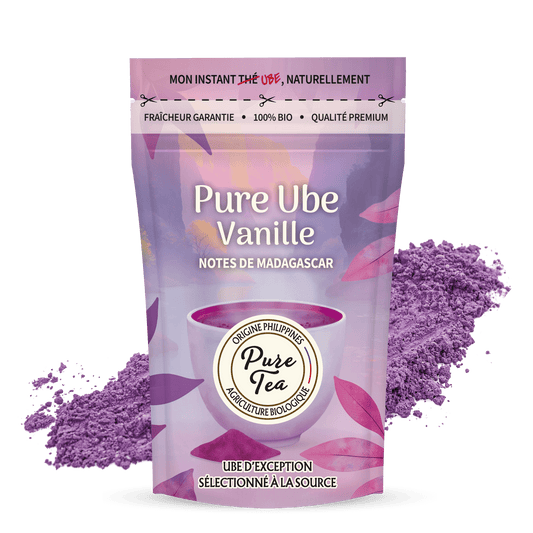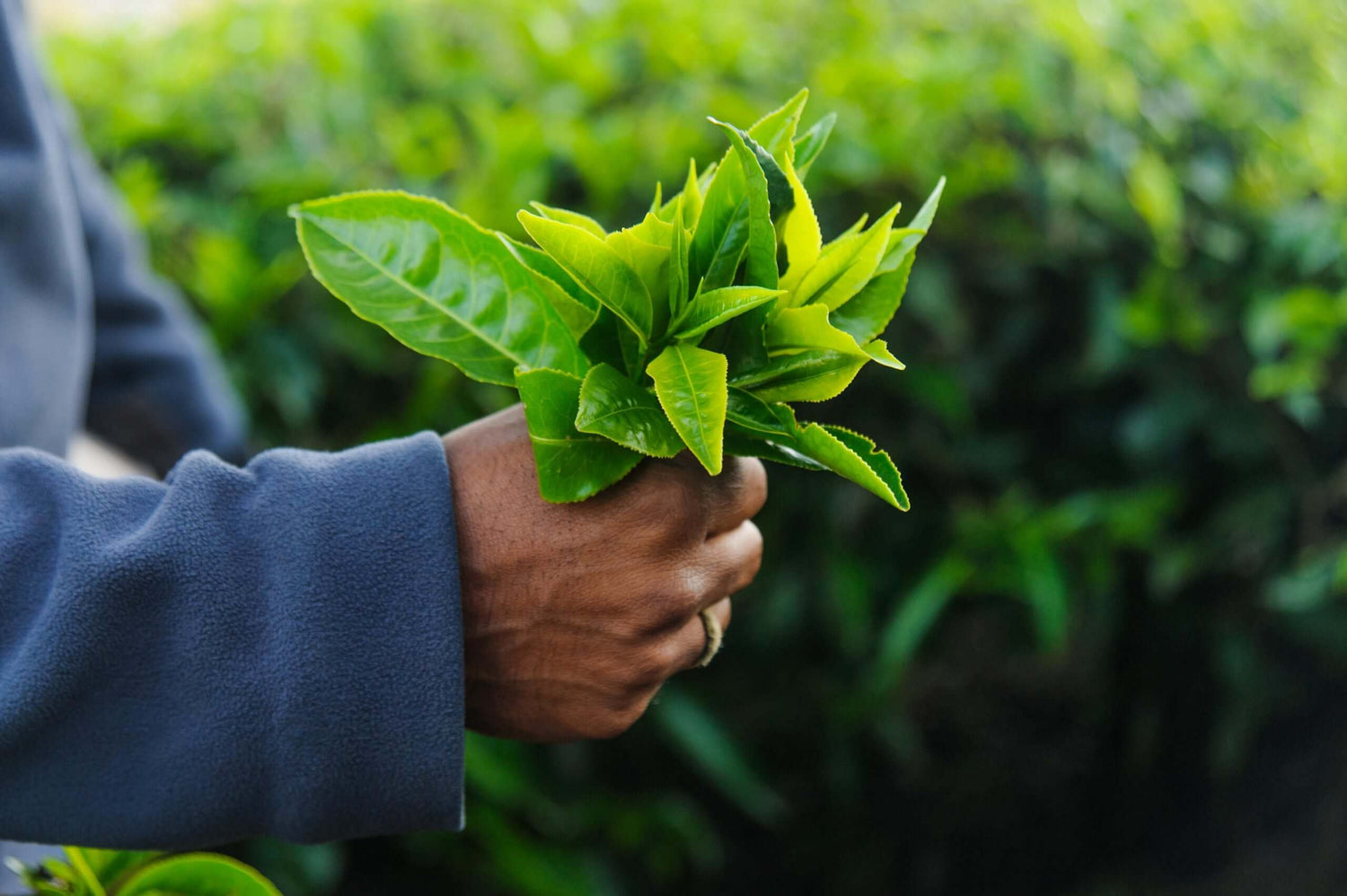In the arid lands of the Cederberg mountains, north of Cape Town in South Africa, grows a modest-looking shrub with fine needles: Aspalathus linearis, better known as Rooibos. This wild plant, endemic to this part of the world, hides a millennia-old history and a wealth of medicinal properties long overlooked by the rest of the world. Today, rooibos has become a true alternative to tea, with its own unique identity, even giving rise to a wide range of organic rooibos teas with very diverse flavor profiles.
The Khoikhoi people, the region’s first inhabitants, harvested rooibos leaves long before the arrival of European settlers. They dried them in the sun and used them as an infusion to relieve various ailments: digestive issues, inflammation, anxiety. This knowledge, passed down orally through generations, forms the foundation of an often-overlooked indigenous medicinal culture.
A caffeine-free infusion, but not without power
For a long time, rooibos was mistakenly classified as “red tea.” In reality, it contains no caffeine, since it doesn’t come from the tea plant (Camellia sinensis) but from a legume—the same family as peas or beans. This makes it a unique beverage you can enjoy any time of day, with no stimulating effect, even for children or pregnant women.
But its richness doesn’t end there. Rooibos is packed with polyphenols and antioxidants, some of which can’t be found in other plants. Aspalathin, for example, is a flavonoid unique to rooibos, studied for its anti-inflammatory, antioxidant, and even blood pressure-lowering properties. It may help combat oxidative stress, cellular aging, and even certain metabolic diseases.
Furthermore, preliminary studies suggest that regular rooibos consumption may help reduce cortisol (the stress hormone), improve sleep quality, and strengthen immune defenses. Unlike more common infusions, rooibos stands out for its gentle yet comprehensive action on the body.
From wild bush to sustainable farming
For centuries, rooibos was harvested wild. It was only at the start of the 20th century that the first attempts at structured cultivation appeared, notably thanks to Benjamin Ginsberg, a Russian-South African plant enthusiast. He observed the Khoikhoi ritual and decided to promote its consumption among European settlers by touting its digestive properties.
However, the plant is quite finicky: it only grows naturally in a very limited area of the globe, in the sandy, acidic soils of the Cederberg. This restricted territory, combined with rising global demand, makes rooibos especially valuable. Its cultivation requires little irrigation, making it a water-efficient plant—a crucial factor in a country often affected by drought.
Today, most of the rooibos grown comes from organic farming. This approach helps preserve biodiversity, protect pollinators, and, above all, respect the subtle flavors that the African sun imparts to every leaf.
From traditional uses to modern research
Traditionally, rooibos was used by healers to treat a wide range of ailments. Decoctions were given to soothe infant colic, abdominal pain, skin conditions, and even sleep disorders.
Modern medicine is beginning to rediscover this knowledge. South African and Japanese researchers, in particular, are studying the effects of rooibos on blood pressure, blood lipids, and blood sugar. While not all the benefits attributed to rooibos have been confirmed by science, it is undeniably a natural health ally, gentle, and free of known side effects.
A chameleon infusion: hot, cold, spicy, or fruity
One of rooibos’s greatest strengths is its aromatic versatility. Smooth, naturally sweet, never bitter even with long steeping, it lends itself to a multitude of variations:
-
Infused hot with a hint of cinnamon or ginger for a cozy winter herbal tea
-
Cold-brewed overnight, garnished with orange zest or mint for a summer drink
-
Used as a base for non-alcoholic cocktails, or even in some plant-based dessert recipes
Among these variations, some will prefer a gourmet rooibos infusion, sweet and fruity, with notes of strawberry and vanilla reminiscent of classic desserts, while others will enjoy rooibos with exotic notes, inspired by sun-drenched tropical fruits.
It’s an infusion that changes with the seasons and your cravings, never growing tiresome. There’s no need for added sugar, as its tannins are very low, and its coppery red color makes it as beautiful to look at as it is delicious to drink.
A symbol of South African identity
Since 2014, rooibos has been recognized as a Protected Geographical Indication by the European Union—a first for an African product. This label not only guarantees the origin of rooibos, but also helps preserve traditional expertise and local farming practices.
For the Cederberg communities, it’s a source of cultural and economic recognition. Some cooperatives now operate on fair trade principles, involving local growers in production decisions and ensuring them a fair wage.
Drinking rooibos means supporting a sustainable agricultural ecosystem rooted in a deep human story, beyond just taste.




